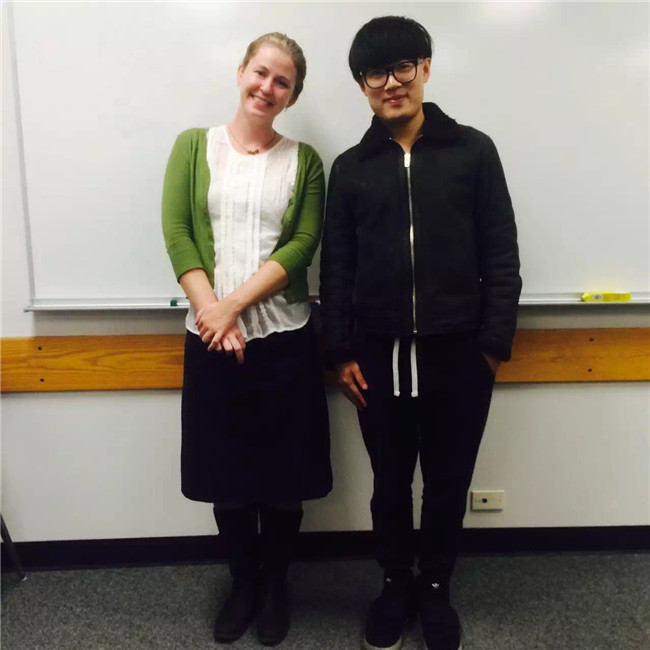UNC’s Curriculum is Comprehensive and Impressive
Peng Cui /University of Northern Colorado
After working at BRS for five years, ten teachers were chosen to the go to the University of Northern Colorado to develop and refresh our teaching philosophy and methods, as well as to further study and develop a better understanding of the American education model. In addition, I now have a more in-depth knowledge of American culture.

UNC’s teaching style is a model to encourage actively learning
Dr. Wagner led the learning process in the core course of the curriculum: The Methods of Teaching World Languages.
Dr. Wagner introduced the key concepts of teaching methods, the teaching standards and the syllabus, which are extremely important and useful in Multilingual Education. The concepts taught are invaluable to me as a teacher now and will guide me in the future to effectively and successfully scaffold learning in students.
The most impressive teaching strategy applied in the class was group learning. Dr. Wagner always carefully divided the class into smaller groups according to our language backgrounds and learning ability so we could share and discuss different perspectives on education. Furthermore, there was at least one native English speaker in each group to facilitate fluent cultural interaction. The group learning experience was a super learning climate enjoyed by all in the class.
I felt completely comfortable participating in this course, because the professor built a positive classroom culture and climate which encouraged us to collaborate and participate. We brainstormed together each week as we received a huge amount of reading material each week. By working and researching together we maintained a high level of academic achievement, even though the work load really challenged us to keep up, and we began to understand the benefit of these active learning strategies.
After this five months of study, I have found that my reading ability has improved markedly. I sometimes cannot believe I finished so many assignments in this semester. After class, we always shared the learning experience and compared the differences and similarities between Chinese classrooms and American classrooms.

Open-ended learning model
Our next course, Second Language Acquisition Theory, was taught by Dr. Millian. So that we could develop a deeper understanding of the core course and how to create new ways to learn language, Dr. Milian directed us to prepare two different reading assignment presentations on our own. By using this method, we learned from each other and not just the professor, seeing the same lesson through another teacher’s eyes. This allowed us to learn from the perspective of a student just how the theories function through the methods of another teacher.
The third course was an online course called Foundations of Language and Linguistics for ESL/Bilingual Educators led by Dr. Cory. It was amazing to experience how Dr. Cory applied the technology to the scientific curriculum.
Dr. Corry prepared a very detailed reading process schedule and we were required to complete a reading every week. Once we finished reading a book, we wrote an online reflection or summarization so we could view others’ perspectives on the reading, and we provided feedback for each other. I benefited greatly from the discussion and think this way of learning is super fun.
Learning in this open-ended learning model is a new kind of learning style: All the assignments and discussion are posted online. This allows students and professors to interact with each other all the time. I think we should put this style of learning into the Mobile Learning project so that everyone can share learning resources anywhere and anytime.
These three courses complemented each other so well because we could learn the core concepts from different perspectives and through different activities. I think it is very similar to the IB curriculum.
和他在北科罗拉多大学的同学们.jpg)
Teaching philosophy and teaching method
To me, the biggest breakthrough is to embrace breaking out of the ordinary educational methods to some extent. There are numerous teaching resources and new teaching strategies for us to try and we need to explore fresh perspectives to teaching all the time … never, ever stop.
A teacher is a life-long learner, so we need to spend a lot of time studying and refreshing ourselves in order to be innovative and creative for our students. We need to keep up with the ever-developing and evolving methods of teaching, because teaching is a belief in learning more than just a subject. It’s a sort of thought transference, and those thoughts should be refreshed and renewed constantly.
Teachers should be qualified professions, as well as inquirers, thinkers, communicators, risk-takers. They should be principled, knowledgeable, open-minded, caring, balanced and reflective. These requirements are what we should expect the future teachers to be.


